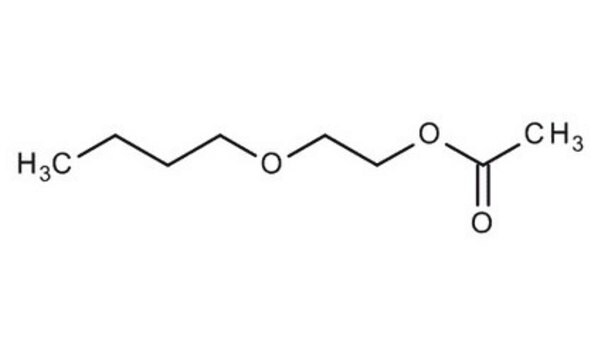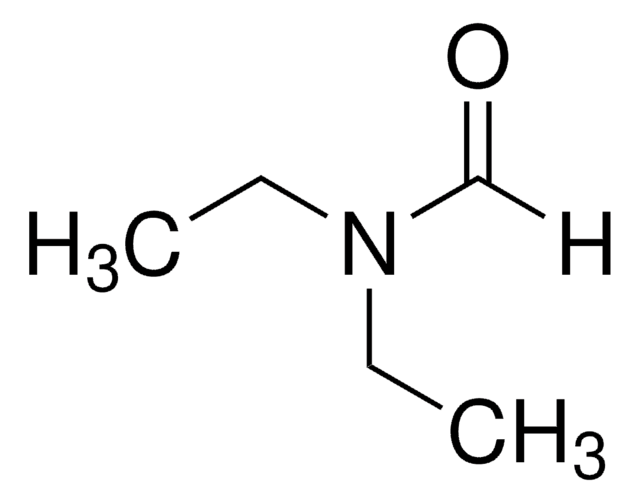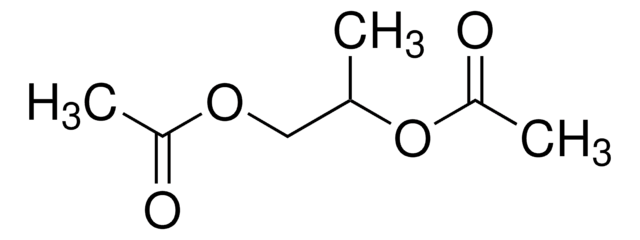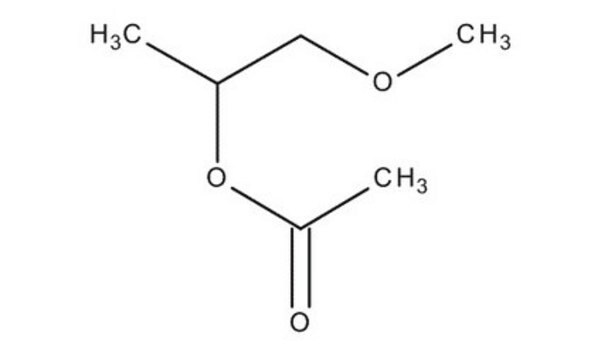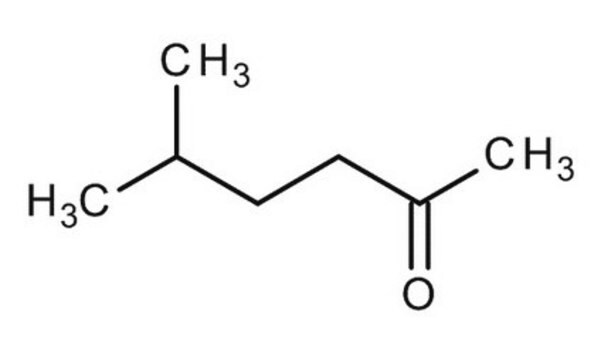307289
2-Butoxyethyl acetate
99%
Sinonimo/i:
1-Acetoxy-2-butoxyethane, BCA, Ethylene glycol monobutyl ether acetate
About This Item
Prodotti consigliati
Densità del vapore
5.5 (vs air)
Livello qualitativo
Tensione di vapore
0.29 mmHg ( 20 °C)
Saggio
99%
Stato
liquid
Temp. autoaccensione
644 °F
Limite di esplosione
0.88 %, 33 °F
8.54 %, 135 °F
Indice di rifrazione
n20/D 1.413 (lit.)
P. ebollizione
192 °C (lit.)
Densità
0.942 g/mL at 25 °C (lit.)
Gruppo funzionale
ester
ether
Stringa SMILE
CCCCOCCOC(C)=O
InChI
1S/C8H16O3/c1-3-4-5-10-6-7-11-8(2)9/h3-7H2,1-2H3
NQBXSWAWVZHKBZ-UHFFFAOYSA-N
Cerchi prodotti simili? Visita Guida al confronto tra prodotti
Categorie correlate
Descrizione generale
Applicazioni
- Three-Dimensional Printing of Scaffolds: 2-Butoxyethyl acetate was utilized in the synthesis of poly(glycerol sebacate) acrylate for 3D printing applications, highlighting its role as a solvent in developing biocompatible materials for medical implants and tissue engineering (Wu et al., 2020).
- Migration Analysis in Food Contact Materials: Demonstrates the application of 2-Butoxyethyl acetate in the extraction and analysis of migrating compounds from plastic baby bottles, using GC-MS to ensure consumer safety and compliance with food safety regulations (Onghena et al., 2014).
Avvertenze
Warning
Indicazioni di pericolo
Consigli di prudenza
Classi di pericolo
Acute Tox. 4 Dermal - Acute Tox. 4 Inhalation - Acute Tox. 4 Oral
Codice della classe di stoccaggio
10 - Combustible liquids
Classe di pericolosità dell'acqua (WGK)
WGK 1
Punto d’infiammabilità (°F)
168.8 °F - closed cup
Punto d’infiammabilità (°C)
76 °C - closed cup
Dispositivi di protezione individuale
Eyeshields, Faceshields, Gloves, type ABEK (EN14387) respirator filter
Scegli una delle versioni più recenti:
Possiedi già questo prodotto?
I documenti relativi ai prodotti acquistati recentemente sono disponibili nell’Archivio dei documenti.
I clienti hanno visto anche
Il team dei nostri ricercatori vanta grande esperienza in tutte le aree della ricerca quali Life Science, scienza dei materiali, sintesi chimica, cromatografia, discipline analitiche, ecc..
Contatta l'Assistenza Tecnica.
